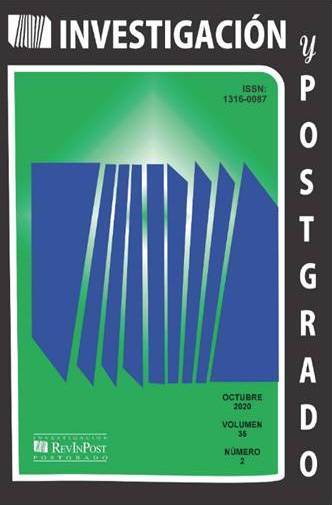LANGUAGE, DIVERSITY AND TALENT: A CASE STUDY IN FOUR SCHOOLS OF LLEIDA CITY (SPAIN)
DOI:
https://doi.org/10.56219/investigacinypostgrado.v35i2.2788Keywords:
language, diversity, talent, school, writingAbstract
This paper presents the analysis of 178 writing samples of students of fifth and sixth grade of Primary Education in Lleida to observe their written resolution from a previously given structure, consisting of viewing three videos of dances from different cultures, comparing them and contrast them using a concept map and finish with a text of four paragraphs. The method used has consisted of structurally analyzing the texts produced as well as the previous conceptual map. In the analysis we have compared the texts of the students of Moroccan origin with those of the rest of the students. As conclusions drawn, we would highlight that it is essential to use strategies for evaluating written samples that take into account the identity and diversity of our students in order to work on the written language.
Downloads
References
Acereda, A. y Sastre, S. (1998). La superdotación. Madrid, Síntesis.
Björk, L. y Blomstand, I. (2005). La escritura en la enseñanza secundaria. Barcelona, Graó.
Camps, A. (1990). Modelos del proceso de redacción: algunas implicaciones para la enseñanza. Infancia y aprendizaje, 13(49), 3-19.
Cassany, D. y Morales, O. (2008). Leer y escribir en la universidad: Hacia la lectura y la escritura crítica de géneros científicos. Revista Memoralia, 5(2), 69-82.
Gardner, H. (1998). Las inteligencias múltiples: la teoría en la práctica. Barcelona, Paidós.
Generalitat de Catalunya. (2013). Les altes capacitats: detecció i actuació en l’àmbit educatiu. Barcelona, Departament d’Ensenyament.
Jové, G. y Vicens, L. (2006). Desig d’alteritat: programa «Alber» : una eina per a l’atenció a la diversitat a l’aula. Lleida, Pagès.
Lewis, R.B. y Doorlang, D.H. (2003). Teaching Special Students in General Educations Classrooms. Upper Saddle River, N.Y, Merrill Prentice Hall.
Moreno Cabrera, J.C. y Carlos, J. (2000). La dignidad e igualdad de las lenguas. Madrid, Alianza Editorial.
Pérez, L. (2006). Alumnos con capacidad superior. Madrid, Ed. Síntesis.
Roca, E. (2007). Talent i educació. Paradigmes: economia productiva i coneixement, 1, 112-124.
Sánchez, A. y Torres, J.A. (1997). Educación especial II: Ámbitos específicos de intervención. Madrid, Ediciones Pirámide.
Spinelli, H. y Testa, M. (2005). Del diagrama de Venn al Nudo Borromeo: recorrido de la planificación en América Latina. Salud colectiva, 1(3), 323-335.
Vaugh, S., Bos, C. y Schumm, J.S. (2003). Teaching Exceptional, Diverse, and At-Risk Students in the General Education Classroom. Boston: Pearson Education Inc.
VV. AA. (2015). La detecció de les altes capacitats. Guix. Elements d’Acció Educativa, 8, 2-4.
Published
How to Cite
Issue
Section
License
Copyright (c) 2024 Universidad Pedagógica Experimental Libertador

This work is licensed under a Creative Commons Attribution-NonCommercial-ShareAlike 4.0 International License.
Investigación y Postgrado está bajo una licencia internacional Creative Commons Attribution-NonCommercial-ShareAlike 4.0 .
La política de acceso abierto y de licencias con “algunos derechos reservados” no niega la propiedad intelectual ni los derechos de los autores respecto a sus artículos, al contrario, los respeta. Es por ello que:
No se reservan los derechos de publicación de los artículos. Los autores podrán distribuir su artículo en cualquier otro medio, siempre y cuando sea sin fines de lucro. Debe informar al Editor de esta nueva publicación y debe dar el crédito a la revista Investigación y Postgrado.













